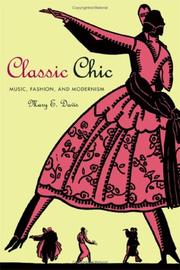| Listing 1 - 3 of 3 |
Sort by
|
Book
ISBN: 3839405017 3899425014 Year: 2015 Publisher: Bielefeld transcript Verlag
Abstract | Keywords | Export | Availability | Bookmark
 Loading...
Loading...Choose an application
- Reference Manager
- EndNote
- RefWorks (Direct export to RefWorks)
Künstliches Geschlechtswesen oder Geschöpf aus Fleisch und Blut? Diese Verunsicherung, die Fotografien geschlechtlich ausgestatteter Puppen evozieren können, resultiert aus dem Prinzip der Verdopplung: Die Puppe ist unser Doppelgänger, die Fotografie entsteht als indexikalische Lichtspur der »Wirklichkeit« und das Geschlecht ist Effekt performativer Wiederholungen. Aufgrund ihrer strukturellen Analogien ziehen sich alle drei Instanzen regelrecht an und potenzieren sich in ihrer unheimlichen Qualität. Denn jedes Double verfügt über das Potential, vertraute Vorstellungen zu bestätigen und in Frage zu stellen. Die fotografierte Puppe scheint den authentischen Körper bzw. das Geschlecht zu präsentieren und führt gleichzeitig beides als Artefakt vor. Auf der Suche nach dem echten Körper treffen wir nur auf seinen Stellvertreter. In diesem Wechsel zwischen wahr und falsch wird das fotografische Puppenbild gleichsam zur aktiven Instanz, die uns unsere Erwartungshaltung und Wahrnehmungsmuster vorführt. Die Analyse der fotografischen Arbeiten Hans Bellmers, Pierre Moliniers und Cindy Shermans spürt den Obsessionen der Puppe nach, die Künstler/innen wie Betrachter/innen nicht mehr loslässt.
Media studies --- Art History of the 20th Century. --- Art History of the 21st Century. --- Arts. --- Body. --- Fine Arts. --- Puppe; Fotografie; Hans Bellmer; Pierre Molinier; Cindy Sherman; Kunst; Kunstgeschichte des 20. Jahrhunderts; Kunstgeschichte des 21. Jahrhunderts; Körper; Kunstwissenschaft; Photography; Arts; Art History of the 20th Century; Art History of the 21st Century; Body; Fine Arts --- Bellmer, Hans, --- Molinier, Pierre, --- Sherman, Cindy, --- Themes, motives. --- Bellmer, Hans
Book
ISBN: 3839435552 9783839435557 3837635554 Year: 2016 Publisher: Bielefeld transcript Verlag
Abstract | Keywords | Export | Availability | Bookmark
 Loading...
Loading...Choose an application
- Reference Manager
- EndNote
- RefWorks (Direct export to RefWorks)
Die Strategie der kritischen Unterwanderung vorgefasster Kategorien ist eine wirkmächtige subversive künstlerische Praktik, der innerhalb des postkolonialen Kunstdiskurses eine besonders wichtige Bedeutung zukommt. Wie Judith Bihr anhand zeitgenössischer Kunst aus Ägypten darlegt, begegnen viele Künstler_innen der Problematik der eigenen Verortung, indem sie stereotype Vorstellungen scheinbar bedienen, um diese zugleich künstlerisch zu unterminieren. Am Beispiel der Verwendung ornamentaler Strukturen wird gezeigt, wie sich die Arbeiten einer eindeutigen Zuschreibung entziehen und so gerade ihre eigene Ambivalenz zum Thema machen. Damit liefern sie zugleich einen wesentlichen Beitrag zur Debatte um eine global formulierte Kunstgeschichte.**
Art, Egyptian --- Egyptian art --- Political aspects. --- Kunst; Ägypten; Kulturtheorie; Orient; Ambivalenz; Postkoloniale Kritik; Postkolonialismus; Afrikanische Kunst; Kunstgeschichte des 20. Jahrhunderts; Kunstgeschichte des 21. Jahrhunderts; Kunstwissenschaft; Art; Egypt; Cultural Theory; Postcolonial Critique; Postcolonialism; African Art; Art History of the 20th Century; Art History of the 21st Century; Fine Arts --- African Art. --- Art History of the 20th Century. --- Art History of the 21st Century. --- Cultural Theory. --- Egypt. --- Fine Arts. --- Orient. --- Postcolonial Critique. --- Postcolonialism.

ISBN: 128236054X 9786612360541 0520941683 9780520941687 0520245423 9780520245426 9780520256217 0520256212 6612360542 0520245423 9780520245426 Year: 2006 Publisher: Berkeley, CA : University of California Press,
Abstract | Keywords | Export | Availability | Bookmark
 Loading...
Loading...Choose an application
- Reference Manager
- EndNote
- RefWorks (Direct export to RefWorks)
Music and fashion: the deep connection between these two expressive worlds is firmly entrenched. Yet little attention has been paid to the association of sound and style in the early twentieth century-a period of remarkable and often parallel developments in both high fashion and the arts, including music. This beautifully written book, lavishly illustrated with fashion plates and photographs, explores the relationship between music and fashion, elegantly charting the importance of these arts to the rise of transatlantic modernism. Focusing on the emergence of the movement known as Neoclassicism, Mary E. Davis demonstrates that new aesthetic approaches were related to fashion in a manner that was perfectly attuned to the tastes of jazz-age sophisticates. Looking in particular at three couturiers-Paul Poiret, Germaine Bongard, and Coco Chanel-and three breakthrough fashion magazines-La Gazette du Bon Ton, Vanity Fair, and Vogue-Davis illuminates for the first time the ways in which fashion's imperatives of originality and constant change influenced composers such as Erik Satie, Igor Stravinsky, and Les Six. She also considers the role played by the Ballets Russes, and explores the contributions of artists including costume and set designer Léon Bakst, writer and director Jean Cocteau, Amédée Ozenfant, and Pablo Picasso. The first study to situate music in this rich context, Classic Chic demonstrates the profound importance of the linked endeavors of composition and couture to modernist thought. In addition to its innovative approach to this important moment in history, Davis's focus on the social aspects of the story makes the book a tremendously engaging read.
Popular music --- Popular culture. --- Fashion --- Musicians --- Culture, Popular --- Mass culture --- Pop culture --- Popular arts --- Communication --- Intellectual life --- Mass society --- Recreation --- Culture --- Artists --- History and criticism. --- History --- Clothing --- 20th century art history. --- 20th century fashion history. --- 20th century music history. --- amedee ozenfant. --- art. --- ballets russes. --- coco chanel. --- entertainment industry. --- erik satie. --- fashion and clothing. --- fashion photography. --- fashion plates. --- fashion. --- germaine bongard. --- high fashion. --- igor stravinsky. --- interdisciplinary. --- jean cocteau. --- la gazette du bon ton. --- leon bakst. --- les six. --- modernism. --- modernity. --- music. --- neoclassicism. --- originality. --- pablo picasso. --- paul poiret. --- retrospective. --- sound and style. --- transatlantic modernism. --- vanity fair. --- vogue.
| Listing 1 - 3 of 3 |
Sort by
|

 Search
Search Feedback
Feedback About UniCat
About UniCat  Help
Help News
News